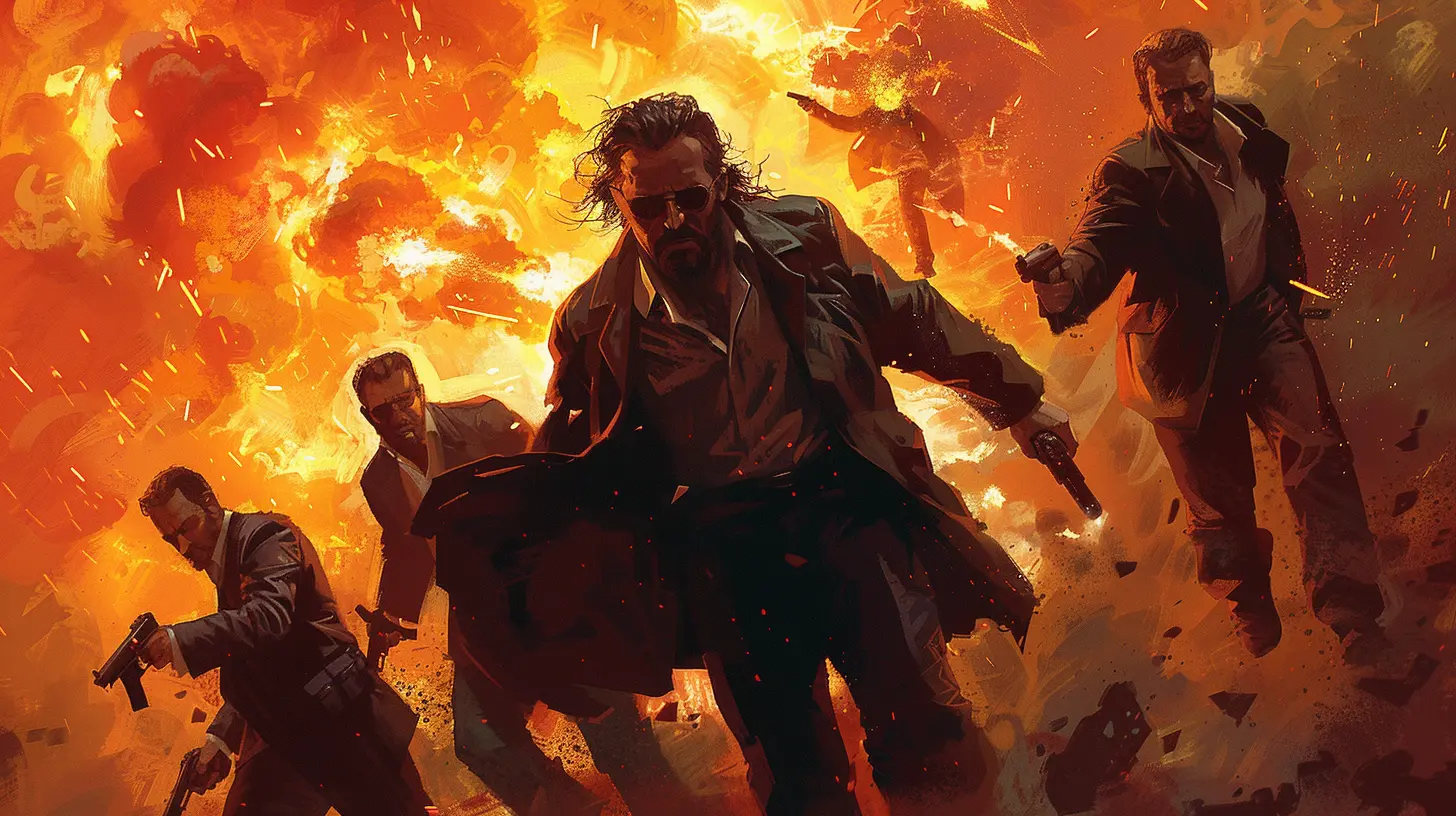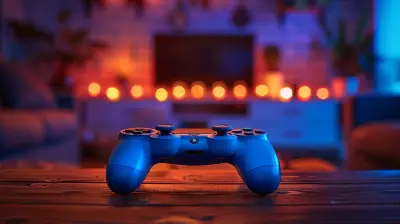Mastering the Art of Bluffing in Card Games
20 June 2025
Bluffing. It’s the secret sauce that takes a simple card game and turns it into a battle of wits, nerves, and strategy. Whether you’re a poker enthusiast, a fan of classic card games like Spades, or just playing a friendly game of Go Fish with your family, bluffing can transform how you play. It’s an art, sure, but anyone can master it with a little practice and the right mindset.
So, are you ready to outsmart your opponents and keep them guessing? Let’s dive into the world of bluffing and uncover the tricks that can help you become the ultimate card-table con artist.
What Is Bluffing, Anyway?
First things first—what exactly is bluffing? At its core, bluffing is the fine art of deception. It’s about projecting confidence in your hand or strategy, regardless of whether it’s genuine or not. It’s no different than pretending you love working out when you’re secretly dying for a donut. In card games, bluffing is about making your opponents believe you hold the winning hand—even when you're holding a whole lot of nothing.The goal isn't just to lie; it's to sell the lie. You want your opponent to believe your story so thoroughly that they make decisions based on it. It’s psychological warfare, plain and simple. And the best part? You don’t need to be a pro card player to use bluffing to your advantage.
Why Bluffing Works (Hint: It’s All About Psychology)
Before we dive into the how-to, let’s talk about why bluffing is such a powerful move. Bluffing works because humans are, well, humans. We’re emotional, we second-guess ourselves, and we love trying to figure people out. Bluffing preys on this natural tendency to analyze and overanalyze.When you bluff, you're creating doubt in your opponent's mind. What if they were about to win, but now they fold because they’ve convinced themselves you’re unbeatable? That little seed of uncertainty is all it takes. It's a beautiful dance between confidence and hesitation, and when done right, you’re leading your opponent exactly where you want them to go.
How to Master the Art of Bluffing
So, how do you go from being a bluffing rookie to a bluffing guru? Relax, take a deep breath, and let’s break it down step by step.1. Read the Room
Bluffing isn’t one-size-fits-all. You’ve got to know who you’re up against. Is your opponent the type who folds at the first sign of trouble? Or are they the no-nonsense, call-your-bluff kind of player? Think of this as a game of poker and personality reading rolled into one.If someone's fidgeting, avoiding eye contact, or biting their lip, chances are they’re nervous. These are the people you can intimidate with a clever bluff. On the flip side, if someone’s cool as a cucumber, you might want to tread more carefully. Bluffing against a seasoned player requires finesse and a little more creativity.
2. The Power of the Poker Face
You’ve heard it a million times: keep a straight face. But easier said than done, right? Sure, we’re not all Oscar-worthy actors, but a good poker face is your best friend when bluffing. That means no smirking, no raised eyebrows, no sudden changes in body language. Think of yourself as the Mona Lisa—calm, composed, and giving away absolutely nothing.Pro tip? If holding a straight face feels impossible, focus on consistency. Stay relaxed no matter what’s in your hand. Got a great hand? Act the same as when you’ve got garbage cards. If you don’t give your opponents any tells, they’ll have a harder time calling your bluff.
3. Timing Is Everything
Bluffing isn’t about just throwing it out there willy-nilly. The best bluffers know when to strike. Early in the game, people are less likely to take big risks, so your bluff might slide under the radar. But as the stakes grow higher, players become more cautious—and your bluffing game needs to adapt.A well-timed bluff can feel like pulling the rug out from under someone. If the pot is big and tensions are high, a bold bluff can send opponents into a tailspin. On the other hand, don’t go overboard and bluff every round. Remember, the boy who cried wolf didn’t have a happy ending.
4. Play the Long Game
Here’s the deal: bluffing isn’t just about the current round. It’s about building your reputation. If your opponents start catching onto your bluffs every time, they’ll stop taking you seriously. And once they figure you out, it’s over. You’ve got to keep them guessing.Mix up your strategy. Sometimes, play the hand you’re actually dealt without bluffing at all. Let them see you win fair and square, so they don’t know when you’re faking. Other times, throw in a small, low-risk bluff just to keep the mystery alive. The longer you keep them on their toes, the more effective your bluffs will be.
5. Confidence: Fake It Till You Make It
Bluffing without confidence is like trying to make an omelet without breaking eggs—it’s just not going to work. If you’re unsure of yourself, your opponents will smell it from a mile away. Even if you’re internally panicking, act like you’ve got the royal flush of all royal flushes.Channel your inner movie villain: lean back in your chair, look relaxed, and speak with authority. Confidence is contagious, and if you believe your bluff, your opponents might just believe it too.
6. Learn to Cut Your Losses
Here’s a hard truth: not all bluffs will work. Sometimes people will call you out, and guess what? That’s okay. The key is to not let it shake your entire game. If your bluff gets busted, laugh it off, shrug, and move on. Dwelling on a failed bluff will only make you second-guess yourself in the future—and nobody wants that.Think of bluffing like fishing. Sometimes you reel in a big catch. Other times, the fish swims away. Either way, you’re still in the game.
Common Bluffing Pitfalls to Avoid
Even the best bluffers stumble now and then. Here's what to watch out for so you don’t fall into the same traps:- Overbluffing: Bluffing too often is the fastest way to lose credibility. If you’re bluffing every hand, people will catch on faster than a sneeze in a quiet room.
- Underestimating Your Opponent: Don’t assume everyone’s easy to fool. Some players are like human lie detectors—always be prepared to get called out.
- Letting Emotions Take Over: Bluffing is all about composure. If you’re playing angry, frustrated, or overly excited, it’s going to show. Keep your cool.
Bluffing in Different Card Games
The techniques we’ve covered work across many games, but here’s how you can tweak your bluffing strategy for different scenarios:- Poker: Poker and bluffing go together like peanut butter and jelly. Use every tactic in your arsenal—poker faces, betting patterns, and confidence—to dominate the table.
- Uno: Yup, even Uno has room for bluffing! Pretend you’re hoarding Wild cards when you’re actually down to plain old number cards.
- Go Fish: Ask for cards you don’t need to throw your opponents off your trail. The confusion alone is worth it.
Final Thoughts: Bluff Like a Pro
Bluffing is part science, part art, and a whole lot of fun. It’s your chance to outthink, outmaneuver, and outplay the competition—not with the cards in your hand, but with the story you sell. Whether you’re playing for money, bragging rights, or just a good laugh, mastering the art of bluffing will boost both your confidence and your win rate at the table.Now, go ahead and put on your poker face. The card table is calling, and it’s time to show them what you’ve got. Bluff boldly, and may the odds be ever in your favor.
all images in this post were generated using AI tools
Category:
Card GamesAuthor:

Kaitlyn Pace
Discussion
rate this article
2 comments
Runehart Price
Bluff like a cat in a poker face-off!
June 22, 2025 at 4:37 AM

Kaitlyn Pace
Thanks! Embracing that feline finesse can definitely up your bluffing game! 🐾🃏
Delia McGowan
Great tips! Bluffing adds excitement and strategy—perfect for enhancing your card game experience!
June 21, 2025 at 4:57 PM

Kaitlyn Pace
Thank you! I'm glad you found the tips helpful. Bluffing truly does elevate the game!


